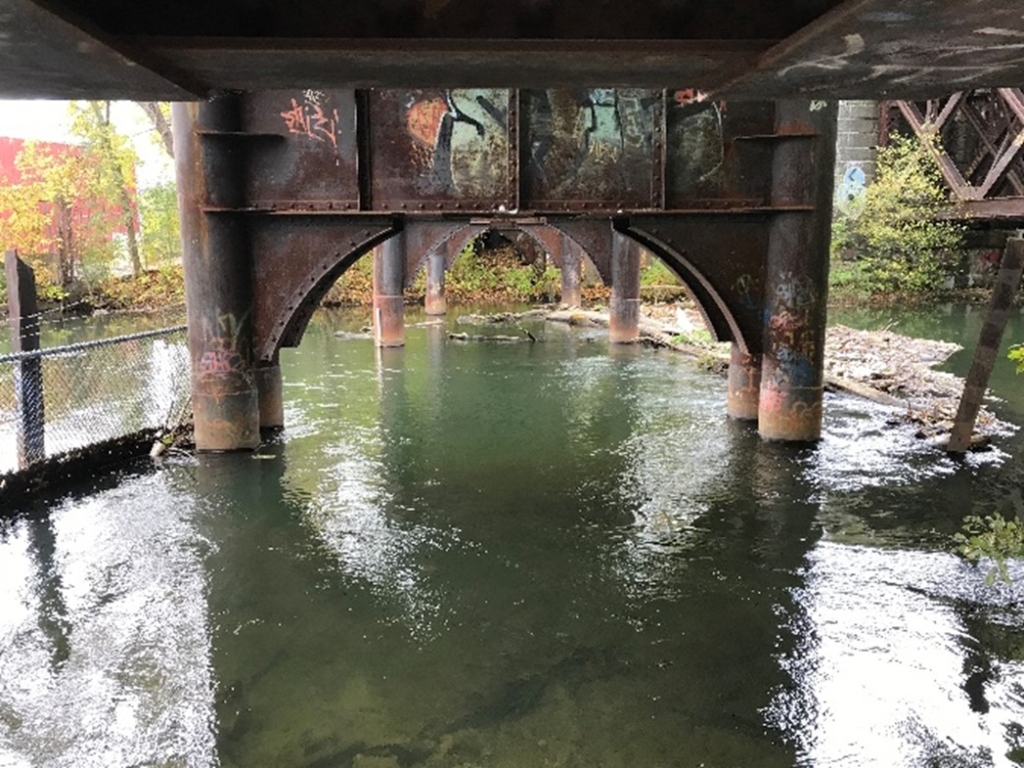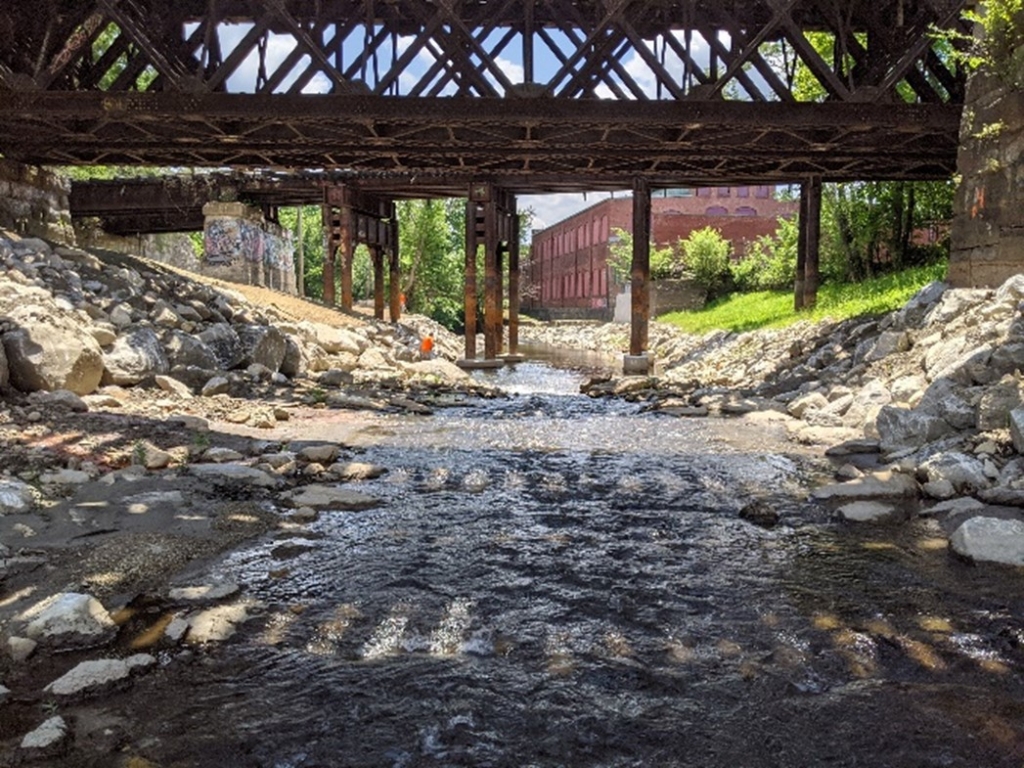The Ecological Benefits of Dam Removal
Dam safety has arisen as a critical infrastructure issue in the Northeast. Owners of dams contended with the impacts of climate change, sea level rise, and flash flooding events at an increased frequency. At the same time, many dams are nearing (or are over) a century old and are past the end of their useful lifespan; others have been in disrepair for decades and require upkeep.
Increasingly, removal is being seen as a long-term solution for dams that are no longer needed. Removal can often achieve both short- and long-term cost savings, while creating a permanent ecological improvement and strengthening resiliency against climate change.
State and federal governments have responded to this need by directing infrastructure funding toward the identification and removal of these dams. For example, in December 2023, the Commonwealth of Massachusetts announced the investment of $25 million in state and federal funding toward the removal of eight obsolete dams in Central and Western Massachusetts, reflecting a regional need to improve waterway resiliency. Our engineers are leading seven of these removal projects, located in Athol, Brookfield, Hardwick, New Braintree, Sutton, and Windsor.
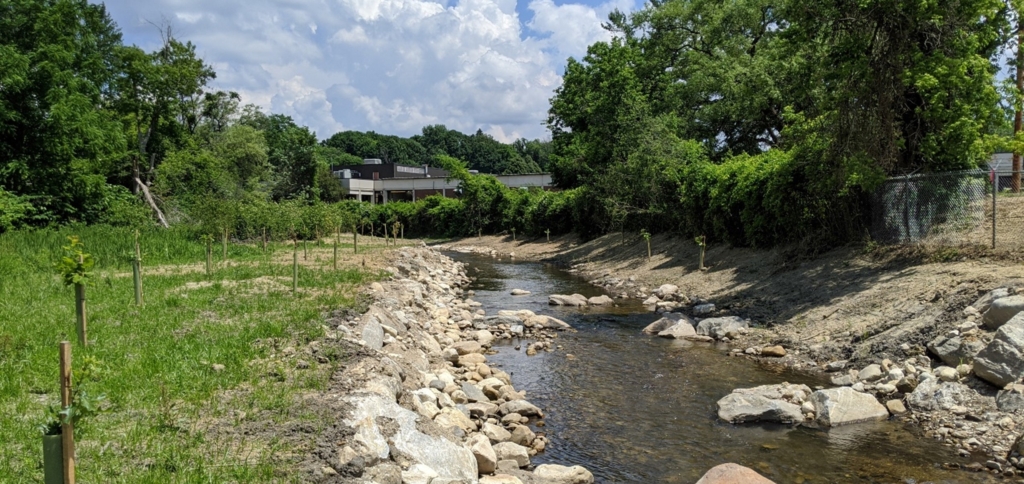
Balancing Economic & Ecological Benefits
Many factors contribute to the dam owner’s choice to remove, rather than rehabilitate, these unneeded dams. In a previous article, we discussed the economic considerations that a dam owner might have when undertaking a removal project. Removal is usually a preferable option for unneeded dams, as it typically eliminates the needs for ongoing maintenance or inspection. Since the article’s release, policies like the American Rescue Plan Act (ARPA) and Infrastructure Investment & Jobs Act (IIJA) have led to an influx of public funding available for dam safety projects, further strengthening the economic case for removal.
In many cases, removal of an unneeded dam will also have overwhelmingly positive impacts on the surrounding environment, leading to long-term improvements in water quality and species biodiversity. Constructed dams can negatively impact local ecology in many ways, as they restrict passage for fish and affect the flow and temperature of water within the upstream and impoundment areas. Restoring the natural flow of the stream allows for improved hydraulic capacity and reduced sediment capture, improving the quality of the water and local habitats.
Studies of recent dam removals in Massachusetts have shown that, after removal, there was improvement in including upstream and downstream temperature regulation, levels of dissolved oxygen (DO), and the presence of important macroinvertebrate and fish species. All ten of the observed dam removal sites experienced an improvement in ecological diversity, with an average of 13% increase in sensitive species. (Abbott et al, 2022; Zaidel et al, 2020)
Dam removal can be a time-intensive and complex process, as the impacts need to be well understood. Topics such as river hydraulics, sediment management, surrounding infrastructure constraints, and regulatory considerations need to be studied early in the planning process. Although some short-term impacts from removal may appear negative at first, such as conversion of wetland resource areas, the longer-term positive ecological responses often outweigh those concerns. It is helpful to identify and communicate potential benefits to stakeholders early and often for projects that may be controversial or may require public support.
Our Dam Removal Work
These three projects are in various stages of design and/or construction, showcasing how the removal of an unneeded dam can benefit communities and the local ecology:
Downstream areas of the Tel-Electric Dam; before (left) and after removal (right).
Tel-Electric Dam Removal, Pittsfield, MA
To improve ecological conditions of the West Branch of the Housatonic River, eliminate a public safety hazard, and help lead the revitalization of adjacent urban neighborhood areas, the Tel-Electric Dam removal (a.k.a., Mill Street Dam) required the off-site disposal of sediment containing polychlorinated biphenyls (PCBs) and other contaminants associated with urban runoff and historic discharges. We led a sediment characterization study to evaluate contaminant distribution throughout the project area, developed the Sediment Management Plan, and led the sediment management activities during construction.
After construction was completed and sediment was removed, the Housatonic River and floodplains in the vicinity of the dam were notably improved and ready for the addition of a future greenway. The existing dam and impoundment contributed to negative impacts on dissolved oxygen (DO), temperature, and the overall water quality of the river. One year after removal, DO concentrations had improved and the site experienced an increase in sensitive species, such as Hydropsychidae caddisflies and other filter-feeding species, which benefited from the restored river conditions. (Abbott et al, 2022)
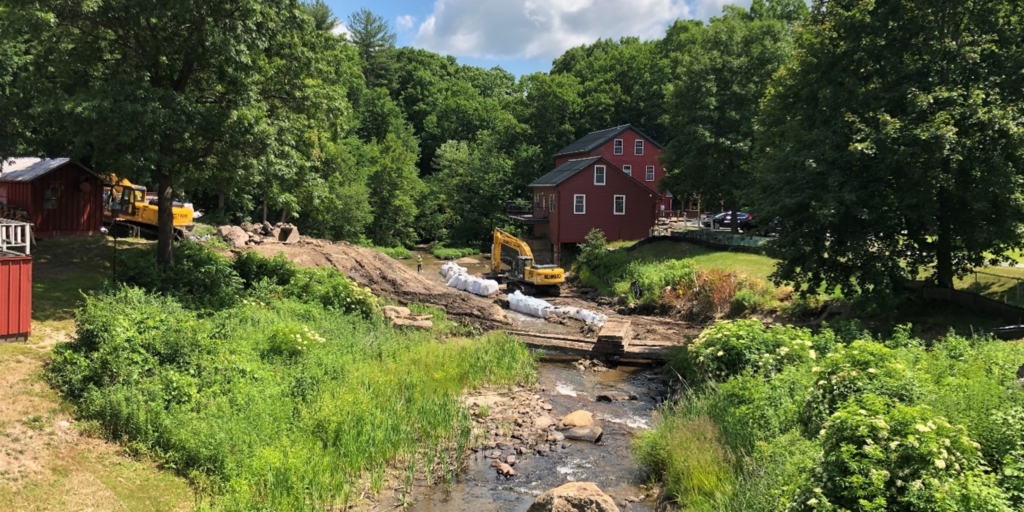
Lyman Pond Dam in process of removal.
Lyman Pond Dam Removal, Southampton, MA

Rare mussels (S. chordata) identified at Lyman Pond site post-removal.
We performed design, permitting, and bidding assistance for the removal of Lyman Pond Dam on the Manhan River. This former mill dam was deemed a Significant Hazard due to flooding concerns. Work included adapting a preliminary design to provide greater consideration for rare species habitats and to be more adaptive to the physical site constraints, which included steep slopes and shallow bedrock.
The project reconnected over 27 miles of river habitat and improved habitat for several rare species including freshwater mussels and the eastern box turtle. The upstream watershed includes areas designated as “Core Habitat” or “Critical Natural Landscape” by the Natural Heritage and Endangered Species Program. Our work also included environmental permitting, construction administration, and post-construction reporting.
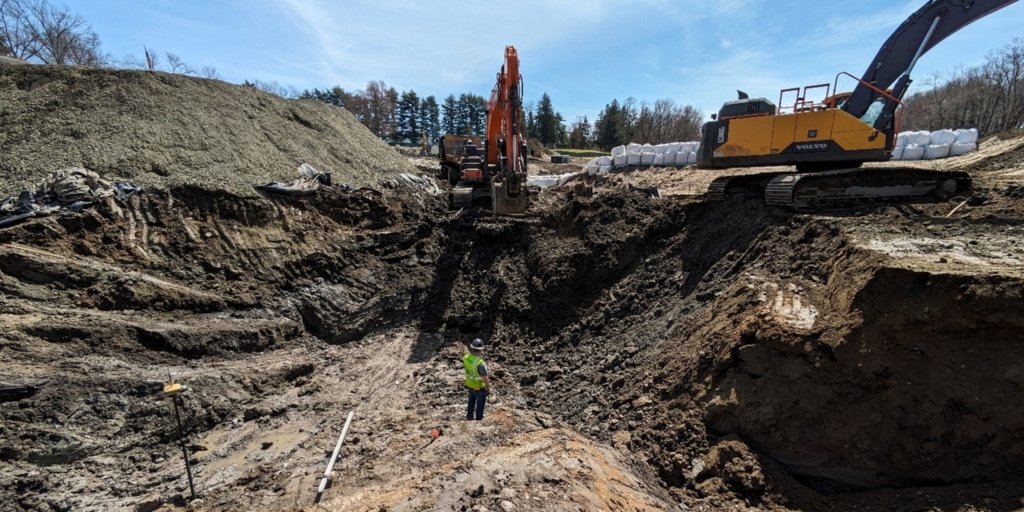
Bemis Pond Dam in process of removal.
Bemis Pond Dam Removals, Chicopee, MA
Our firm is providing design and permitting services for the removal of Upper and Lower Bemis Pond Dams on Abbey Brook with Chicopee’s Szot Park to avoid possible dam failure. The lower dam is classified as having significant hazard potential and both dams contribute to poor water quality. Bacteria is an issue in the brook, in part due to the high presence of geese within the park. Removal of the dams will improve water quality, encourage new native vegetation growth, and improve community resilience to flooding within an underserved population center. The project includes a significant public education and engagement component to bring park users closer to the river to inform them about the importance of river health, water quality, and the ecological and community benefits associated with dam removal.
Citations
Abbott, K., A. Roy, and K. Nislow. 2022. Restoring Aquatic Habitats Through Dam Removal. U.S. Department of Interior, Fish and Wildlife Service, Cooperator Science Series FWS/CSS-148-2022, Washington, D. C. https://doi.org/10.3996/css92498424
Zaidel, P., A. Roy, K. Houle, B. Lambert, B. Letcher, K. Nislow, and C. Smith. 2021. Impacts of small dams on stream temperature, Ecological Indicators, Volume 120, 106878, ISSN 1470-160X, https://doi.org/10.1016/j.ecolind.2020.106878
Abbott K., P. Zaidel, A. Roy, K. Houle, K. Nislow. 2022. Investigating impacts of small dams and dam removal on dissolved oxygen in streams. PLoS ONE 17(11): e0277647. https://doi.org/10.1371/journal.pone.0277647



